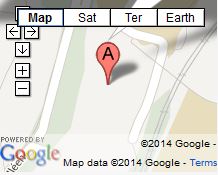LIBEMOD is a multimarket energy equilibrium model based on a set of competitive markets for eight energy goods; electricity, natural gas, oil, coking coal, lignite, steam coal, biofuels and biomass.
All energy goods are produced and consumed in each of the model countries; EU27, Iceland, Norway and Switzerland. Natural gas and electricity is traded competitively in integrated European markets using gas pipelines and electricity transmission lines that connect the model countries. Biomass is also traded between pairs of model countries, whereas there are competitive world markets for coking coal, steam coal, oil and biofuels. There are only domestic markets for lignite. Fuels are traded in annual markets, and there are seasonal and time-of-day markets for electricity.
There is a competitive supply of all fuels and electricity. In each model country, electricity can be produced by a number of technologies; steam coal power, lignite power, gas power, oil power, reservoir hydro power, run-of-river power, pumped storage hydro power, nuclear power, waste power, biomass power, wind power, solar power and other renewable power. Each electricity producer maximises profits, and the installed and maintained electricity capacity can be used to produce electricity, or sold as reserve capacity to a domestic system operator.
In each model country there is demand for all types of energy from four end-user groups; households, industry, transport and the service sector (including the public sector). There is also intermediate demand for fuels from fuel-based electricity producers. Demand from each end-user group (in each model country) is derived from a nested multi-good multi-period constant elasticity of substitution (CES) utility function. Domestic transport and distribution costs for electricity and natural gas differ across countries and user groups, but are otherwise fixed.
There is a short-run and a long-run version of the model. In the short-run version, all capacities for electricity production and transmission of electricity and natural gas between the model countries are given. By contrast, in the long-run version of the model, there are investments in electricity production and transmission capacities between countries. These are determined by profitability so that marginal costs equal marginal revenues.
The model simultaneously determines all energy prices and quantities produced, traded and consumed in each sector in each model country. In particular, the model determines all prices and quantities traded in the world markets. In the long-run version of the model, investments in the energy industry in each model country are determined. The model also determines the emissions of CO2 by country and sector.
In addition to the long-run and short-run versions of LIBEMOD there is a distinction between assuming competitive markets and non-competitive markets (see Golombek et al. 2013). Finally there is also a stochastic LIBEMOD version.
The current edition of LIBEMOD is an updated and extended version of the 2000 model (Aune et al. 2008). All input data for the base year has been updated from the year 2000 to 2009. A number of new model countries have also been added so that the model now consists of the EU27 countries, Iceland, Norway and Switzerland, and not just the western-European countries. Changes have been made to how wind power is modelled, and solar power has been introduced. Liquefied natural gas (LNG) has been incorporated in the model through a separate modelling of the supply of LNG from the rest of the world. Another addition to LIBEMOD 2009 is the inclusion of biofuels in the transportation sector. For new power plants a cost of connecting to the grid has been included, assuming that the first new plant of an electricity technology will be located in the most favourable location. Finally, the unit cost of investment in gas pipes is decreasing in quantity, whereas in the previous version of LIBEMOD the unit cost was independent of quantity.
For a good understanding of the model the documentation of the 2000-version of the model should be used as a starting point. The technical documentation for the 2009-model only addresses the changes from the 2000 to the 2009 version of the model.
Download
